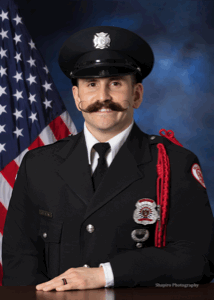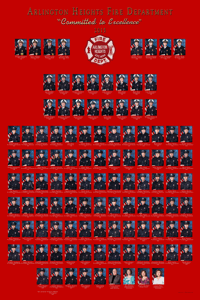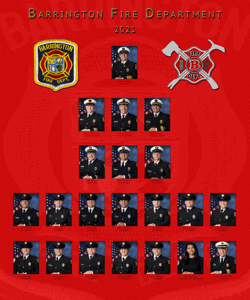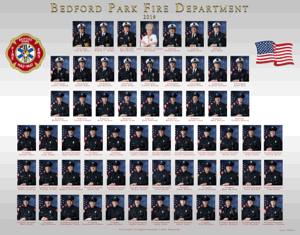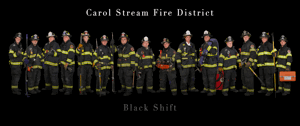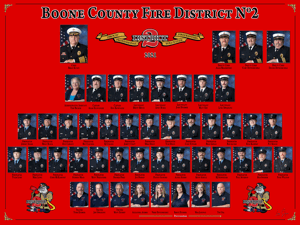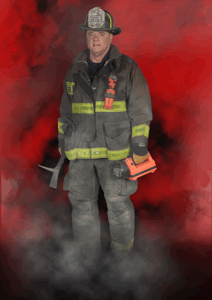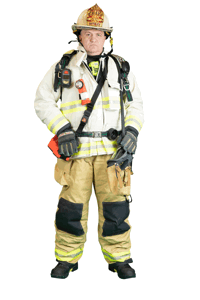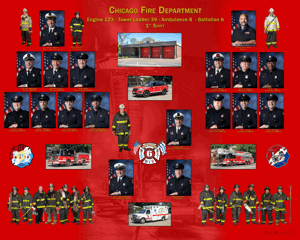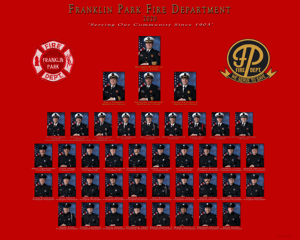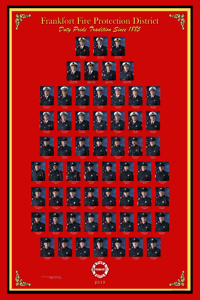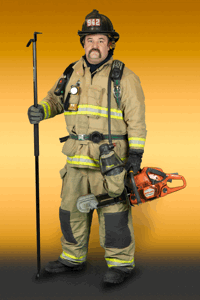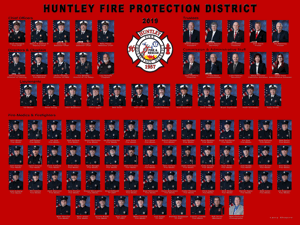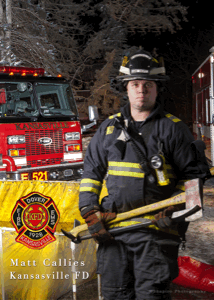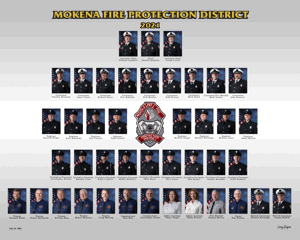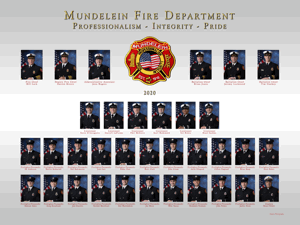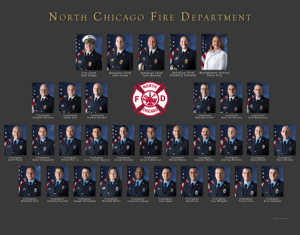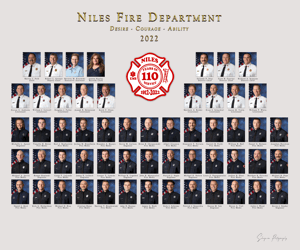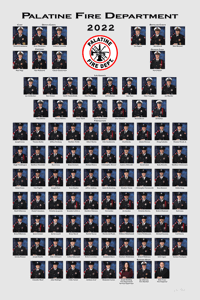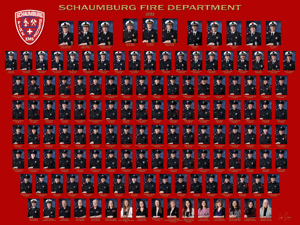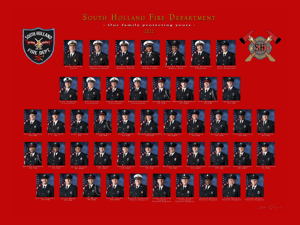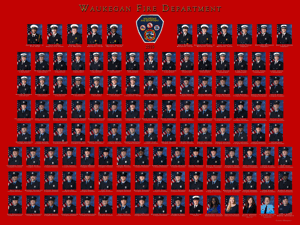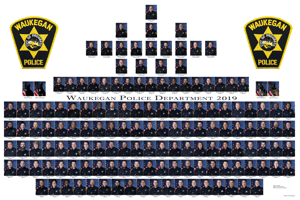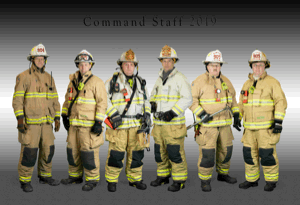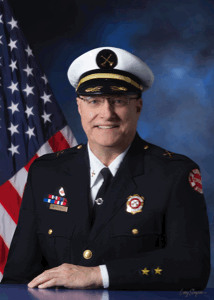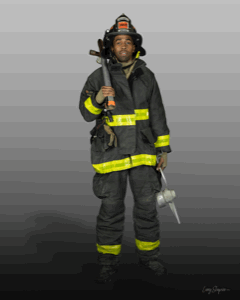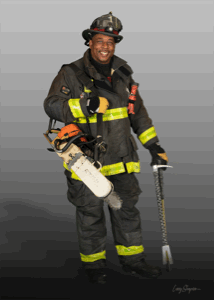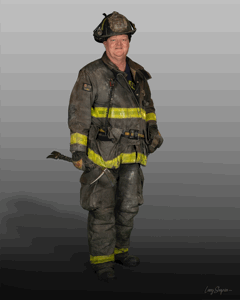
Peter Pirsch with the smoke ejector in 1931. Kenosha History Center
Excerpts from kenoshanews.com:
It would be impossible to count the number of lives saved by the use of fire engines and equipment manufactured over the years by Kenosha’s Peter Pirsch & Sons, but 92 years ago last month, Kenosha native Peter Pirsch, his employees, and a prototype from his factory were directly responsible for saving the lives of 16 men, all in one stroke.
The telephone rang in the home of Peter Pirsch at midnight on April 13, 1931. Chicago Fire Department Commissioner Michael J. Corrigan urgently needed his help.
Corrigan said that at the intersection of 22nd and Laflin Streets in Chicago, 35 feet below the surface, sewer workers of the Chicago Sanitary District were working construction on a 450 ft. sewer tunnel.
Earlier in the evening about 6:30 pm, workers were using a candle to determine the location of a leak in the tunnel when a pile of sawdust ignited. The men tried extinguishing the fire unsuccessfully for about 45 minutes before turning in a fire alarm. The first apparatus on the scene was Truck 14 and with Captain Timothy O’Neil. A thin curl of smoke was all that could be seen from the surface.
O’Neil and four firemen without breathing equipment rushed into the elevator and were lowered down to the tunnel. Three came back up 15 minutes later, with severe smoke inhalation. The smoke and gases were overpowering.Next, men from Engine 23 went down without masks and tanks with the same result. Firefighters from the suburbs, which had better equipment, arrived with masks and tanks. They lent them to Chicago firefighters, who kept trying to rescue the growing number of people inside.
This sequence of events was repeated again and again as no one at the surface had an accurate understanding of the intensity of the fire, smoke, and gases inside the tunnel.
After hours of attempts, the construction company informed the fire chief that some of the men — missing sewer workers and firefighters — could have sealed themselves at the far end of the tunnel inside an airtight compartment.
Back on the phone to Kenosha, Corrigan wanted Pirsch to bring a new smoke ejector unit that Pirsch had in his factory. If Pirsch could bring the machine, they could pump out the smoke and fumes and the men below the surface might be saved.
The smoke ejector, basically a huge air blower, was the invention of Minneapolis Fire Chief Charles Ringer. Manufacturing rights, however, were owned by Peter Pirsch & Sons.
At that moment, a smoke ejector was sitting in the Pirsch factory. Pirsch made phone calls and had a dozen of his men meet him at the plant.
The invention prototype was in its second stage: the model had been perfected and dismantled and the second machine was in the process of being connected to the chassis. In a matter of hours the task was completed.
Pirsch, and employees Ed Wade and George Williams left in the wee hours of the morning for Chicago, enlisting the aid of a rookie Kenosha policeman to drive the vehicle.
Years later, Pirsch would swear to the story that they made the 60-mile trip in 88 minutes — with an untested chassis. A pretty quick trip for 1931 era roads and vehicles.
A police car stopped them at the Chicago city limits, but instead of offering to escort them, the officers threatened to throw them in the slammer for speeding! The officers knew nothing of the fire.
Pirsch told them to lead his party to Laflin Street and 22nd … if a legion from the Chicago Fire Department wasn’t there, they could throw him in jail.
It was sheer bedlam as the truck approached the scene at daybreak. Seven hundred fireman and thousands of people filled the streets.
More than 50 firefighters who had entered and exited the tunnel were suffering from smoke inhalation. Some bodies had been recovered. By then, the state mine superintendent from Springfield had suggested sealing up the tunnel to extinguish the fire; a move that meant certain doom for the trapped men.
Pirsch, Wade, and Williams donned gas masks to set-up the blower and the truck was backed up to the shaft where two long tubes were lowered deep into the abyss. Then the blower was revved-up and engaged.
The suction drew the smoke and gas fumes out with one tube at a rate of 20,000 cubic feet of smoke per minute, while the other carried fresh air in.
Down in the tunnel, the men in the sealed chamber had been able to get some air from a pipe that extended to the surface, but that supply wasn’t nearly enough to sustain them. One of the 17 had succumbed to the smoke, and the others knew they had to make a break for the shaft very soon or suffer the same fate.Back on the street, Pirsch checked his watch: 23 minutes had passed. Suddenly, a patrolman let out a whoop! There in the smoke, first one form then another, until 16 men, some on their knees, all coughing and bleary-eyed, emerged from the shaft.
The crowd went wild and the families of the men who had been trapped rushed to help them.
Then it was time to bring out the dead. Seven sewer workers and four firefighters. Injured were 54 firefighters and laborers.
The Illinois Fire Service Institute reported the four men who died in the line of duty were Capt. Timothy O’Neil from Truck 14, one of the first to enter the tunnel; Firefighter Edward Bryon Pratt of Squad 8; and Firefighters William Coyne and William Karstens of Engine 23.
Pirsch and his smoke ejector made the headlines in newspapers around the world as he and his men were given credit for saving the 16 lives.
Peter Pirsch died on July 14, 1954 at the age of 88.
thanks Dennis
